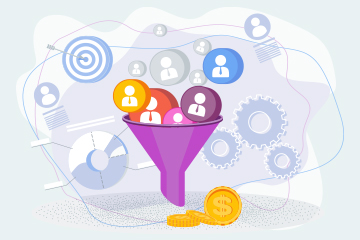Remember the days of newspaper and magazine subscriptions? One paid a fixed amount of money for a fixed period and received the newspaper or magazine according to the pre-determined schedule without having to pay every time. Over the years, customers extended subscriptions to cable TV, and now to Amazon, Netflix, and even grocery deliveries because subscriptions translate into convenience, and ease of access to regularly used services. These customers are now increasingly expecting the same levels of convenience and access from their banking and financial services providers. Subscription pricing models are becoming increasingly popular in the world of banking, marking a fundamental shift from product-centric strategies and fee structures to a deeper focus on customer lifetime value and engagement.
Pivoting Away from Product-Centric Revenue Models
Traditionally, banking incomes came from two sources:
- Interest margins: The difference between the interest rate charged on loans and that paid on deposits.
- Fee income: This is the fees for services ranging from account maintenance and ATM usage to wire transfers and overdrafts.
Income from interest margins is impacted by the prevailing interest rate environment while fee income provides a steady income stream.
Both these strategies were effective in an era where banking was product centric, and customers were passive recipients of services and offerings. Banks were assured of short-term profitability even if these pricing models resulted in only transactional relationships with their customers.
The Rise of a Subscription Economy
But today, customers expect a different level of service and engagement from their banks. They expect personalized, relationship-based offerings, and seamless, on-demand access to those offerings. Modern customers, especially younger generations like millennials and Gen Z, are used to subscription-based services from non-financial service providers. 70 percent of people in the 18-44 age group subscribe to multiple services, compared to 63 percent of those in the 45-64 age group, and 55 percent for those aged 65 years and older.1 Younger customers also subscribe to more services, with those in the 18-44 age range consuming 8.4 subscriptions on average, compared to 7.9 for those aged more than 65 years.2 And there is now increased demand and appetite for subscription-based banking services. The recurring payments market is already showing signs of strong growth spurred by the rise of subscription-based business models. It is expected to grow to more than USD 240 billion by 2028, at a CAGR of 9. 6 percent.3
Redefining Success Metrics in the Subscription Era
For banks, subscription models offer a steady and predictable stream of income, which is essential for stability amidst disruptive market conditions. Of course, the shift from traditional fee structures to subscription models necessitates a fundamental transformation in operational practices as well as success metrics. Where banks prioritized account openings as a measure of success, they must now focus on customer retention rates, reduced customer attrition, and loyalty indices. They must ensure continuous engagement and hyper-personalized offerings to sustain subscriber interest in the long term. Banks need to focus on modernizing product development, personalization strategies, and even customer operations for this new subscription era. Above all, they must focus on modernizing revenue engines to ensure accurate, secure, and customized pricing and billing.
Scalable and Secure Revenue Management Systems
Banks that intend to roll out subscription-based pricing models need revenue engines that can handle complex billing structures, securely manage customer data, and ensure seamless service delivery. They need a revenue management system that is automated and can handle recurring payments, pricing tiers, and usage-based billing. The platform must be able to secure customer data and comply with data security and privacy regulations. It must be integrated with existing banking systems to deliver a unified customer experience. And it must be scalable to accommodate an expanding customer base as the business grows. In addition to data privacy regulations, the revenue management engine must also ensure compliance with taxation rules across the regions the bank operates in. And it must enable the bank to clearly communicate terms and conditions, pricing, renewal policies, and cancellation procedures to ensure customers can make informed choices.
Leveraging a Modern Pricing Engine
The problem is that pricing is embedded into legacy core banking systems for most organizations. These are powerful systems, but lack the agility and scalability required to handle subscription pricing. They are also complex because of multiple product variants and operate in silos. Most banks do not want to touch their legacy core systems as they continue to power the foundational business, and modernization efforts are likely to be expensive, lengthy, and risky. The solution to this problem lies in robust, cloud-native, and microservices-based middleware revenue management systems. These can be deployed over the legacy core, to separate the system of engagement from the system of records. They can power innovative pricing models like subscriptions and manage the subscription end to end with automated billing, recurring payments, and renewals.
The shift to subscription models is not a passing fad, but a strategic evolution aligned with new customer expectation from their financial services partner. With this transition banks can foster deeper customer relationships, while ensuring steady and predictable revenue streams. But successful implementation of this model necessitates investments in revenue management platforms that can help drive pricing innovation. As the financial landscape continues to evolve, banks that adapt to these models will be better positioned to meet the dynamic needs of their customers and retain their competitive edge.



